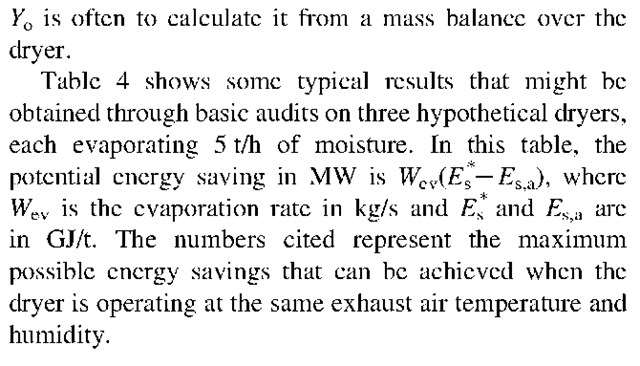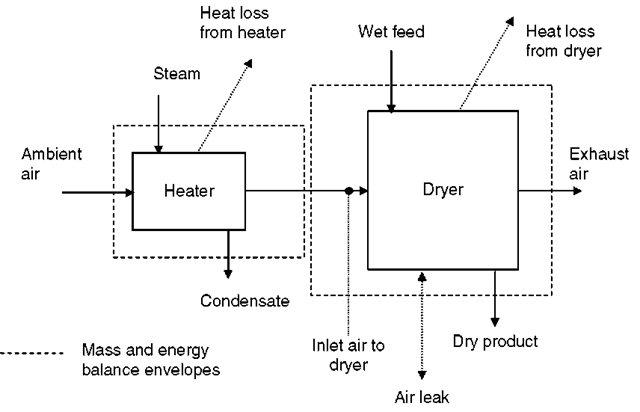Abstract
Dryers are widely used on an industrial scale and are major consumers of energy. This article first briefly reviews some of the more common types of drying equipment. It then goes on to discuss the energy consumption of dryers, with particular emphasis on an ideal adiabatic dryer model against which the performance of drying equipment in the field can be benchmarked. It will then describe the use of energy audits to quantify potential energy savings. Finally, it will discuss low-cost and capital-intensive schemes for reducing the energy consumption of dryers.
| NOMENCLATURE | |
| r
^ pg |
Specific heat of dry air (kJ/kgK) |
| Es | Specific energy consumption (GJ/t) |
| E s,a | Specific energy consumption of adiabatic dryer |
| (GJ/t) | |
| E * | Measured specific energy consumption (GJ/t) |
| F | Feedrate (dry solids basis) (kg/s) |
| Q ev | Heat required to provide the latent heat of |
| evaporation (kW) | |
| Q htr | Heat supplied to dryer by heater (kW) |
| T | Temperature (°C) |
| w
ev |
Evaporation rate (kg/s) |
| X | Moisture content (mass water per unit mass of dry |
| solids) (kg/kg) | |
| Y | Humidity (mass of water vapor per unit mass of dry |
| air) (kg/kg) | |
INTRODUCTION
Drying can be defined as that unit operation which converts a liquid, solid, or semi-solid feed material into a solid product that has a significantly lower moisture content. Although there are some notable exceptions,drying is normally achieved through the application of thermal energy, which is used in part to supply the latent heat of the evaporation of water. In certain industrial processes, drying may also involve the removal of organic solvents, either alone or in combination with water.
Drying forms an integral part of many industrial manufacturing processes. Examples can be found in the following sectors: chemicals, petrochemicals, polymers, food, agriculture, pharmaceuticals, ceramics, minerals, paper and board, textiles, etc. Dryers come in a wide variety of configurations with throughputs ranging from 50 kg/h or less to tens of tonnes per hour. As would be anticipated, batch dryers are employed at relatively low throughputs and continuous dryers at higher throughputs. The exact demarcation between these two categories of dryer is based on a number of technical and economic factors.
The principal types of batch and continuous dryers are classified into different categories as shown in Figs. 1 and 2, respectively. In these figures, the term “layer dryer” is used to describe those devices in which a surface within the dryer is employed to support and/or heat the coherent mass of drying solids. Conversely, in dispersion dryers, the solids are freely suspended in the hot air flow. The feedstock may be heated directly by convection with hot air, as in dispersion dryers, or indirectly by conduction through a heat-exchange surface, as in contact dryers. In the latter case, operation is possible in a vacuum as well as at atmospheric pressure. Special dryers include those in which energy is wholly orpartially supplied by means of dielectric (microwave and radiofrequency) heating or water is removed by sublimation, as in freeze dryers. Both types are relatively expensive in terms of capital and operating costs. Therefore, the use of dielectric dryers is largely restricted to the removal of relatively small traces of moisture, which is expensive by conventional means. Freeze drying can be employed when low-temperature processing enhances a product’s quality and value, as is the case with freeze-dried coffee.
A selection of typical and widely used industrial dryers is described in Table 1 and illustrated schematically in Figs. 3-7. Because of the complexity of drying operations, many factors have to be considered and weighed when selecting an appropriate dryer for a given application.[1] Often there is no one “right” answer as several options may be both technically and economically viable. The optimal choice can be defined as that dryer which satisfies all process requirements at minimum cost. Process requirements may include the specification of designated quality parameters in addition to exit moisture content. Minimum cost is often taken to mean minimum capital cost, but this ignores the expenditures on fuel, which dominate the cost of the drying operation over its economic life.
Drying processes involve simultaneous heat and mass transfer, the underlying theory of which is relatively complex and falls beyond the scope of this article. The interested reader is therefore referred to one of a number of specialized handbooks on drying[2'3] or to the appropriate chapter in a more general Chemical Engineering text-topic.[4'5] This article concentrates primarily on those aspects of dryer operation that impact on their energy use.
ENERGY CONSUMPTION OF DRYERS
Drying processes consume very large quantities of energy. There are several reasons for this. The first, as noted above, is their widespread use throughout industry. Secondly, by their very nature, dryers are highly energy intensive. As a rule of thumb, a typical convective dryer can be expected to consume at least 1 MW of thermal power per t/h of evaporation. Finally, as dryers are frequently operated very inefficiently, this figure may in practice be considerably higher than it needs to be. As a result, many companies view dryers as popular targets in their energy conservation programs. The recent escalation in the price of oil and natural gas has naturally provided an added incentive. Additionally, the Kyoto Protocol has focused the need for governments of signatory countries to take drastic actions to curb greenhouse gas emissions. In order to achieve this, a body of enabling legislation has been introduced, particularly within the European Union. This legislation and its likely impact on both dryer manufacturers and operators is reviewed elsewhere.[6]
Fig. 1 Simplified classification of batch dryers.
Fig. 2 Simplified classification of continuous dryers.
Table 1 Examples of different dryer types
Fig. 3 Horizontal agitated dryer.
Fig. 4 Drum dryer (Double drum, dip feed).
Fig. 5 Cocurrent spray dryer with rotary atomizer and pneumatic conveying of dried powder.
The most recent analysis of dryer energy consumption within the United Kingdom was published by Gilmour et al.[7] and includes a number of interesting statistics. For example, in 1994, estimates of the energy consumed in drying ranged from 348.6 to 379.5 PJ, depending on the method of calculation employed; the corresponding figure for the total industrial energy consumption in that year was 1969 PJ. Moreover, their analysis suggests that the proportion of energy consumed in drying progressively increased from around 11.6% in 1982 to 17.7%-19.3% in 1994. Another interesting statistic cited by Gilmour et al. is that the cost of fuel consumed by a typical convective dryer over its lifetime will likely exceed five times its initial capital cost. Given the recent worldwide escalation in oil and natural gas prices, this figure is probably a significant underestimate in today’s terms.
Fig. 6 Plug flow fluidized bed dryer.
Fig. 7 Cascading rotary dryer with cocurrent solids-air flow.
The thermal efficiency of a dryer can be expressed in several ways. A typical measure is:
where QhtI is the total rate at which thermal energy is supplied to the dryer. Of this, Qev is required to provide the latent heat of evaporation. Alternatively, the specific energy consumption Es of the dryer is defined as the thermal energy required to evaporate unit mass of water:
where Wev is the evaporation rate. One might expect Es to be approximately equal to the latent heat of evaporation of water, namely 2.5 GJ/t of water evaporated. In practice however, much higher values are observed (see below).
Gilmour et al.[7] cited previously published values of 7] for different industry sectors in the United Kingdom. As can be seen in Table 2, these differed quite widely, presumably reflecting the mix of dryer types employed and products dried, amongst other factors. Assuming that these figures are typical of those for other industrialized countries, the variation in the drying efficiencies cited suggests that there should be considerable scope for reducing dryer energy consumption. However, as will be discussed below, this statement has to be viewed with caution as many theoretical improvements may not be achievable in practice.
Baker and McKenzie[8] undertook a survey of the energy consumption of 32 industrial spray dryers in the ceramics, chemicals, and food industries. The survey, which was commissioned by the U.K. Government’s Energy Efficiency Best Practice Programme, included dryers evaporating a total of 67.8 t/h of water. The thermal energy input to these dryers was 92.6 MW. The results of this survey, which included dryers having evaporation rates ranging from 0.1 to 12 t/h, revealed values of Es varying from around 3-20 GJ/t of water evaporated. The average for all dryers included in the survey was 4.87 GJ/t.
The data obtained in the above survey were interpreted with the aid of a model that enabled the performance of a particular dryer to be compared with that of its ideal adiabatic counterpart. Baker and McKenzie showed that the specific energy consumption Es,a of such a dryer is not fixed in the absolute sense, but rather that it depended on the temperature and humidity of the outlet air:
Table 2 Dryer performance in selected industrial sectors
In this equation, Cpg is the specific heat of dry air, and Aref is the latent heat of water at 0°C. Ta and 7a denote the temperature and humidity of the ambient air, and T0 and 70 denote the corresponding values for the outlet air leaving the dryer. The latter are set so as to achieve the product’s desired moisture content.
For an adiabatic dryer, it follows from Eq. 3 that a plot of Esa against f = (Ta — Ta)/( Ya — 7a) should be linear with a slope of 0.001 Cpg and an intercept of 0.001 Aref. This plot can be used as a baseline against which the performance of non-adiabatic dryers can be judged. Fig. 8 shows the data obtained in Baker and McKenzie’s survey[8] plotted as Es against (T0 — ra)/ (70 — 7a), in which Ta was taken as 25°C and 7a as 0.005 kg/kg. As would be expected, all of the points scattered on or above Eq. 3, which depicts the performance of an ideal adiabatic dryer.
Eq. 3 can be used to interpret the performance of dryers in the field. As illustrated schematically in Fig. 9, a dryer exhibiting a given specific energy consumption may either be wasting considerable quantities of energy or operating close to peak efficiency. Here, the actual energy consumption of Dryer 1, E*, is significantly larger than the value indicates that Dryer 2 is much more efficient than Dryer 1. Baker and McKenzie[8] found that the efficiency of the 32 spray dryers included in their survey varied widely. On average, though, almost 30% of the energy supplied to the dryers was wasted.
Specific energy consumption therefore provides a useful guide as to how efficiently (or not) a particular dryer is operating. The value of Es must be measured by means of an energy audit on the dryer. Guidance on undertaking such audits is provided in the following section.
DRYER ENERGY AUDITS
Any attempt at reducing the fuel consumption of an industrial dryer should begin with assessments of how much energy is currently being consumed and whether this is being expended usefully or is being wasted. This establishes the benchmark against which future energy savings can be judged. In order to make the above assessments, it is first necessary to carry out an energy audit. This consists of a series of measurements designed to establish pertinent energy and mass flows into and out of the dryer. As each dryer is different, it follows that each audit should be customized to fit it.
There are essentially two types of audit, namely a basic audit and a detailed audit. In both cases, the dryer should be properly instrumented. Fig. 10 illustrates an ideal arrangement of measuring points. The primary purpose of a basic audit is to establish the specific energy consumption of the dryer and to assess the potential energy savings that are possible. If appropriate, a detailed audit can subsequently be undertaken to determine where the energy losses are occurring and to identify the corrective actions necessary to improve the performance of the dryer.
Fig. 8 Plot of specific energy consumption against (Ta — T^)/(Y0 — Fa) for spray dryers (after Baker and Mckenzie[8]).
Fig. 9 Schematic representation of dryer efficiency.
Process measurements on operating dryers are difficult to perform and the following precautions should be taken to minimize errors. All measurements should be made in duplicate or triplicate in order to ensure their accuracy and to confirm that the dryer is operating at steady-state. Triangulation, in which the value of a particular parameter is arrived at by more than one approach, is always advisable as it provides added confidence in the data. It is also important to ensure that all the measuring instruments employed are properly calibrated and used in accordance with recognized (e.g., ISO) standards to ensure accurate results.
Basic Audits
Table 3 lists the measurements that are required for a basic audit, the purpose of which is to determine Es and f so that the performance of the dryer relative to its adiabatic counterpart can be assessed. The specific energy consumption can be calculated from the following equation:
Fig. 10 Location of measurement points (after Baker[6]).
Table 3 Measurements required for a basic audit
| Measurement | Measurements | |
| Number | point | made |
| 1 | Ambient air | Air flowrate, temperature, and humidity |
| 2 | Inlet air | Air temperature |
| 3 | Fuel | Fuel flowratea |
| 4 | Exhaust air | Air temperature and humidityb |
| 5 | Feed | Solids moisture content |
| 6 | Product | Solids flowrate, moisture content |
aIf steam is used as the heating medium, its temperature and pressure should be measured as well. Where possible, the condensate temperature and flow should also be recorded. bIt may be more appropriate to calculate this—see text.
In which F is the dry-basis solid feed rate, and X0 are the moisture contents of the feed material and product, respectively, and QhtI is as defined above. The measurement of F, Xi, and X0 is normally straightforward. Assuming that the dryer is operating at steady-state and that solid losses in, for example, the exhaust air, are minimal, F can be calculated from the production rate, which will undoubtedly be recorded on an ongoing basis for commercial reasons. Two methods are commonly used to determine the heat load ghtr:
1. Direct measurement—This naturally requires that a fuel or steam meter be fitted.
2. Indirect measurement—This is useful in cases where a fuel meter is not fitted. One commonly used method is to carry out an energy balance over the heater.
The use of Method 2 presupposes that the air flowrate is known. This is normally measured using, for example, a Pitot tube. If this is not possible, the original dryer design specifications may, in some circumstances, give a reasonable estimate. However, there is clearly some uncertainty in the latter approach as the operating conditions may have changed considerably since the dryer was commissioned.
Methods 1 and 2 can of course both be used in the same audit. This is a good example of triangulation and increases confidence in the measured values of the energy supplied by the heater and the mass flowrate of the drying air.
problematical as the exhaust air is often dusty and its temperature and humidity are relatively high. Under these circumstances, the most accurate technique to determine
Detailed Audits
Detailed audits are much wider in their scope than basic audits and may involve considerably more measurements. Their principal purpose is to identify the causes of inefficiencies in the dryer. This is accomplished by constructing detailed mass and energy balances around both the dryer and its air heater, as shown in Fig. 11. From these balances, it should be possible, for example, to determine the following:
Magnitude of air leaks (if any) into or out of the dryer
• Magnitude of internal steam leaks (if any) within the heater
Table 4 Results of hypothetical basic audit on dryers having an evaporative load of 5 t/h
| Dryer | 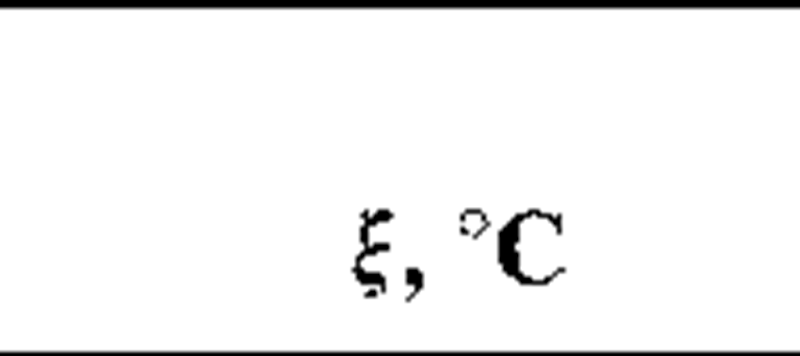 |
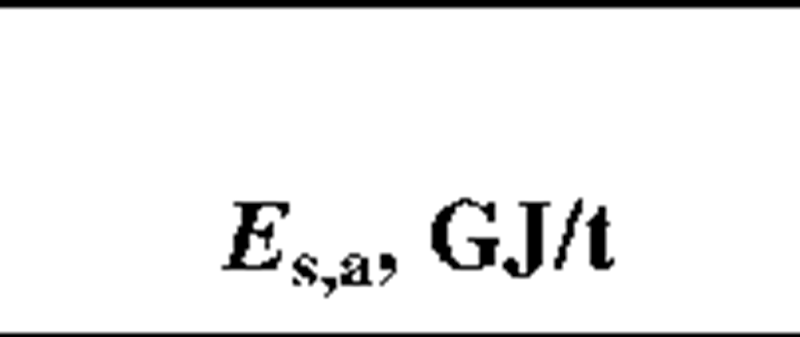 |
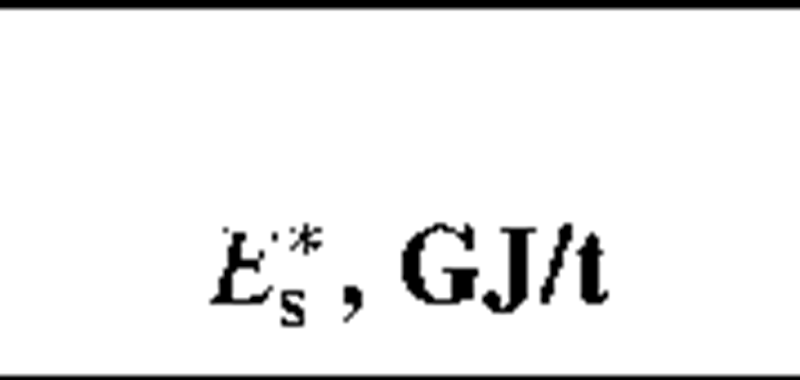 |
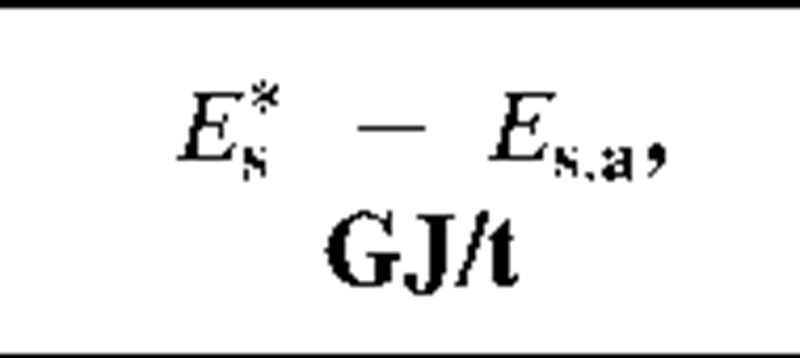 |
Potential saving, MW | Potential saving, % |
| A | 6545 | 9.04 | 11.90 | 2.86 | 4.0 | 24.0 |
| B | 3333 | 5.83 | 9.47 | 3.64 | 5.1 | 38.6 |
| C | 2870 | 5.37 | 6.20 | 0.83 | 1.2 | 13.4 |
• Magnitude of the heat losses from the heater and dryer
Although interpretation of the data obtained in detailed audits requires a specialist’s knowledge, they can, as discussed below, provide useful guidance on possible measures that can be employed to reduce a dryer’s energy consumption.
PRACTICAL MEASURES FOR REDUCING DRYER ENERGY CONSUMPTION
Data obtained from detailed audits can be used to evaluate the effectiveness of various options for reducing the energy consumption of the dryer. These can be divided into (i) schemes involving little or no capital expenditure and (ii) schemes involving significant capital expenditure. A detailed quantitative analysis of the results of a typical dryer audit has been described by Baker.[6]
It should be stressed that any alterations to the dryer itself or to its operating conditions may involve an element of risk and should not be undertaken without a proper evaluation of all the factors involved. Where appropriate, expert guidance should be sought.
Fig. 11 Energy balances around dryer and heater.
Schemes Involving Little or No Capital Expenditure
Examples of schemes that require little or no capital expenditure include those which can be described as housekeeping measures, 1-4 below, and those that are based exclusively on a beneficial change in the dryer’s operating conditions, 5-7.
1. Reducing air leaks
2. Eliminating steam leaks
3. Improving dryer insulation
4. Improving heater insulation
5. Reducing the air mass flowrate
6. Increasing the inlet air temperature
7. Eliminating over-drying
Brief outlines of each of these measures are as follows. Leakage of hot air out of the system or cold air into it clearly represent a waste of energy which can normally be reduced or eliminated by appropriate maintenance procedures. Air in-leakage through, for example, a warped access door, can occur when the dryer is fitted with an exhaust fan and is operated under a slight vacuum. It has the effect of reducing the temperature of the air in the drying chamber below the desired value. As a result, the inlet air has to be heated to a somewhat higher temperature to compensate. The primary effect of steam leaks in the heater is to increase the humidity of the inlet air to the dryer, which, in turn, may reduce the drying rate. To compensate, the inlet air temperature has to be raised above the design value in order to maintain the desired product moisture content.
Adequate insulation of the dryer and the air heater is vital in order to maintain heat losses within acceptable levels. As a result, damaged or water-laden insulation needs to be replaced as soon as possible. It is also sensible to periodically review the optimum insulation thickness, as this will naturally increase as the price of fuel escalates. Repairing and upgrading the insulation, however, will impact on the dryer’s operation. Assuming that the control settings remain unchanged, the temperature of the drying air will increase as a result of the reduced heat loss and the product will therefore be over-dried. There are three possible ways in which the dryer operating conditions can be changed to overcome this problem:
1. Maintain constant solids feedrate and air flow and reduce the inlet air temperature to the dryer.
2. Maintain constant solids feedrate and inlet air temperature and reduce the air flowrate to the dryer.
3. Maintain constant inlet air temperature and flowrate and increase the solids feedrate.
Each of the above approaches needs to be evaluated in order to determine the best strategy to adopt.
It may also be possible to reduce the dryer energy consumption simply by modifying its operating conditions. Most of the heat leaves the dryer via the exhaust air stream. It can be shown that if the air flowrate is reduced, its humidity will be increased and energy will be saved. In practice, there are limits to this approach. For example, it is normally necessary to maintain a difference of at least 10°C between the temperature and dewpoint of the exhaust air in order to prevent condensation in the downstream ductwork and gas-cleaning equipment. Moreover, in a fluidized bed dryer, a minimum air velocity is required to fluidize the particles. Similar limitations exist on other types of dryer. It can also be shown that operating a dryer at as high an inlet air temperature as possible also reduces its energy consumption. Naturally, other adjustments will have to be made in order to maintain a constant product moisture content and care should be taken to avoid damage to the product if it is heat sensitive.
Based on 1978 figures for the United Kingdom, Baker and Reay[9] estimated that, on a national scale, around 11 X 106GJ/y could be saved by implementing the low-cost measures described above. This represents about 8.6% of the energy that was then expended on drying in the United Kingdom.
Schemes Involving Significant Capital Expenditure
Only when the low-cost measures described above have been exhausted and existing dryer performance optimized should capital-intensive schemes even be considered. These possibilities include:
1. Recovering heat from the exhaust air
2. Partially recirculating the exhaust air
3. Utilizing waste heat
4. Monitoring and advanced control
5. Switching from an indirect to a direct heater
6. Prior dewatering of the dryer feedstock
Most of these techniques have been discussed by Mercer,[10] who also summarized the results of several industrial case studies. In practice, with the possible exception of monitoring and control, such schemes are rarely economically viable as retrofits because of the associated plant modifications (e.g., to the ductwork) that are required. However, when considering the purchase of a new dryer, it is worthwhile considering all the above options, which are described briefly below.
1. As noted above, most of heat leaving a dryer is contained in its exhaust air. If this can be at least partially recovered and used to preheat the incoming air to the dryer, significant energy savings, typically 17%-40%, may result.[10] However, industrial experience has produced mixed results. Fouling of the heat exchangers by entrained particles in the dryer exhaust and, to a lesser extent, corrosion, are commonly encountered and result in poor performance and severe operating problems. These can be overcome by employing glass heat exchangers fitted with clean-in-place washing systems; however, such equipment is expensive. Other possible devices include heat wheels, heat pipes, and run-around coils.
2. An alternative means of heat recovery, which avoids the need for heat exchangers and their attendant problems, is to partially recycle, or recirculate, the exhaust air. Typically, 10%-50% of this stream is mixed with the hot inlet air from the heater before entering the dryer. Under appropriate conditions (e.g., an exhaust air temperature in excess of 120°C and a heat-resistant product), fuel savings of up to 20% can be achieved using this technique.[11]
3. In some cases, it may be possible to use process waste heat (flue gases, low-pressure steam, etc.) as a full or partial replacement for conventional energy sources. Clearly, each case must be judged on its own technical and economic merits. Principal factors to be considered include: the quantity of “free” heat available, its reliability of supply, its compatibility with the product (temperature, feasibility of direct contact, etc.), incremental cost of engineering work required to recover the heat, etc. Solar dryers,[12] which are frequently used in tropical and sub-tropical countries to dry agricultural produce in particular, represent an extreme example of the use of free energy.
4. Many older dryers are fitted with, at best, only very basic open-loop controls. Plant trials have frequently shown that effective control systems not only reduce the energy consumption of the dryer, but may also improve product quality, reduce the amount of off-spec product, and increase throughput. Effective controllers range from relatively simple devices (e.g., proportional-integral-derivative (PID) controllers) to more sophisticated types (e.g., adaptive, model-based, and fuzzy logic). The optimal choice should be based on process conditions and the type of dryer employed. Mercer[10] reported energy savings ranging from 0 to 50%, together with associated benefits of typically 0.5-1 times the direct energy savings.
5. Provided that the product being dried is compatible with the combustion gases, a direct-fired dryer should be used in preference to an indirectly heated dryer. In the former case, most (95%-98%) of the energy produced in the burner is transferred to the dryer’s inlet air stream. This compares with 85% for a typical steam heater. In practice, if we also take boiler efficiency into account, a primary fuel savings of around 30% can be achieved by switching from an indirect to a direct heater.
6. Finally, given the poor thermal efficiency of many dryers, every effort should be made to minimize the moisture content of the feed by using more energy-efficient processes. In the case of liquid feedstocks, evaporation is inevitably employed to partially dewater the feedstock prior to spray drying. With solid feeds, it may be possible to use various mechanical dewatering techniques such as vacuum or compression filtration, centrifugation, etc.
Reducing Electrical Energy Consumption
To date, the emphasis in this article has been directed towards reducing thermal energy consumption. However, the electrical energy consumed by ancillary equipment such as fans, pumps, atomizers, and conveyors should not be neglected. Baker and McKenzie[8] reported that the average thermal-to-electric power ratio for the spray dryers included in their survey was around 27; this ratio is equivalent to around nine on a primary fuel basis. Therefore, consideration should always be given to implementing measures that reduce the consumption of electricity. These include installing high-efficiency electric motors, reducing the pressure drop across the system by, for example, fitting variable-speed fans rather than dampers in the ductwork, and employing bag filters rather than cyclones for dust collection.
THE FUTURE
High fuel prices and recognition of the need to cut greenhouse gas emissions are undoubtedly encouraging companies to reduce their energy consumption. In order to adapt to this new environment, dryer operators in particular will need to make some adjustments to the ways in which they purchase and operate their equipment. For example:
1. When buying a new dryer, more emphasis should be placed on lifetime cost rather than initial capital cost, which is often the case at present. This type of long term thinking can be expected to favour those options that have a lower specific energy consumption while, naturally, fulfilling all other process requirements. Contact dryers, for instance, are more efficient (Es ~ 2.8 GJ/t of water evaporated) than their convective counterparts. Superheated-steam dryers are claimed to consume less than 2 GJ/t when heat recovery is employed. Other advantages include faster drying, reduced emissions, and the possibility of recovering volatile organic compounds (VOCs). Pulsed fluidized bed and vibrofluidized bed dryers are more efficient than their conventional counterparts because they use less air. Finally, the efficiency of two-stage dryers is normally higher than that of their single-stage counterparts.
2. Despite their added cost, the heat recovery options and other energy-saving measures described above become more attractive as fuel prices rise. However, a thorough technical evaluation needs to be undertaken to ensure that any potential benefits are not negated, e.g., by fouling of the heat exchanger surfaces.
3. More effort needs to be taken to monitor the fuel consumption of individual dryers as useful energy savings can frequently be achieved by means of low-cost measures. Fitting dryers with advanced control systems can also result in quality improvements.
Collectively, these measures can help to offset rising fuel bills, combat inflation, and conserve our planet’s natural resources.
CONCLUSIONS
By their very nature, dryers are major consumers of energy and are, in addition, often operated inefficiently. The techniques described in this article outline a rigorous approach to benchmarking dryer performance and suggest a hierarchy of methods for reducing their energy consumption.
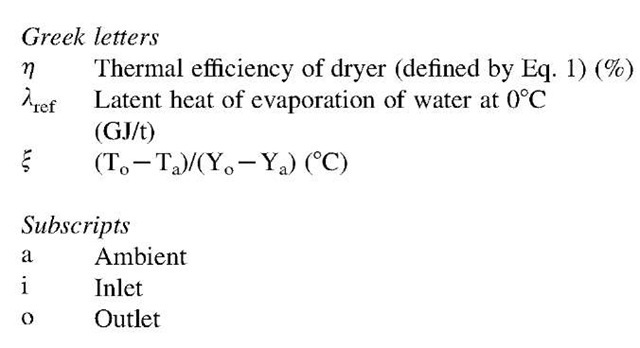
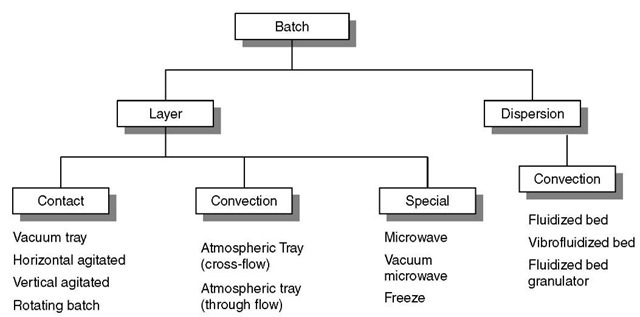
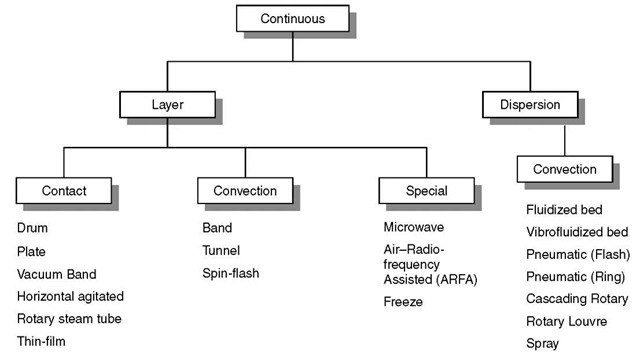
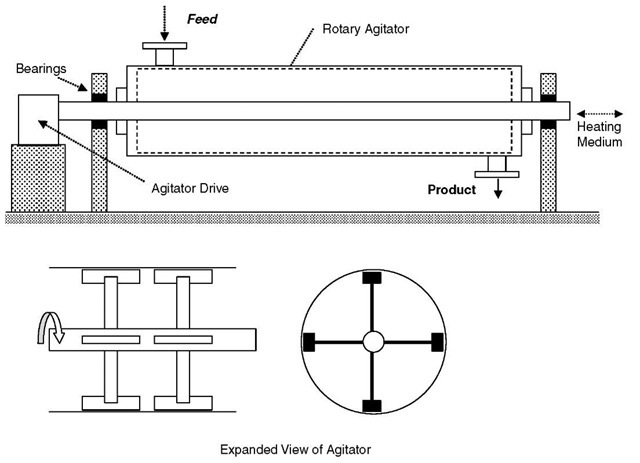
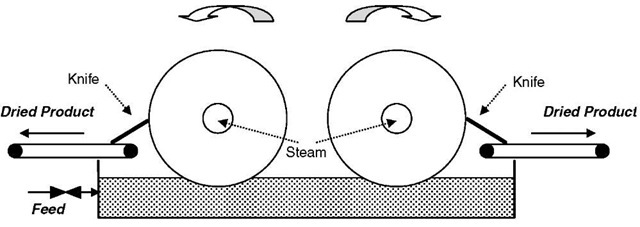
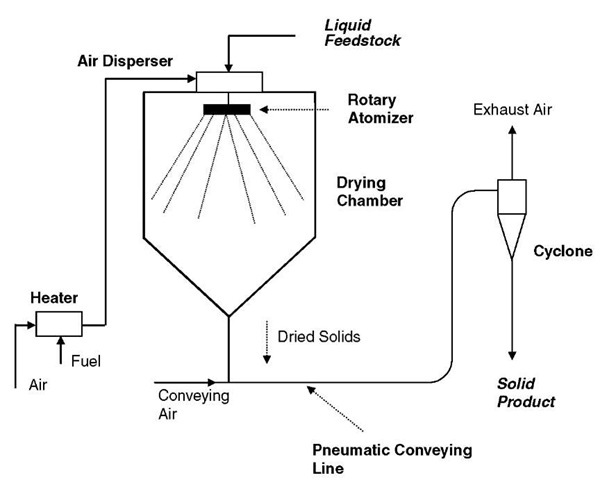
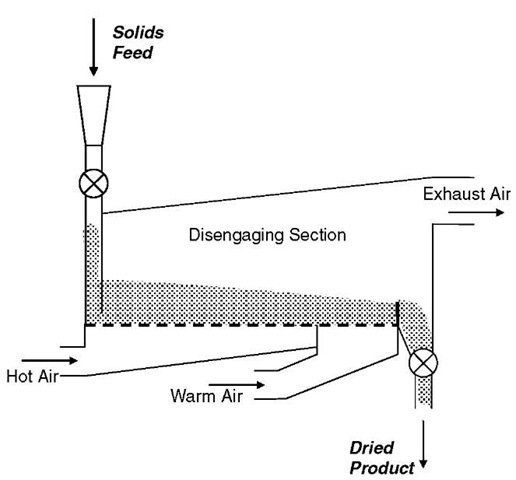
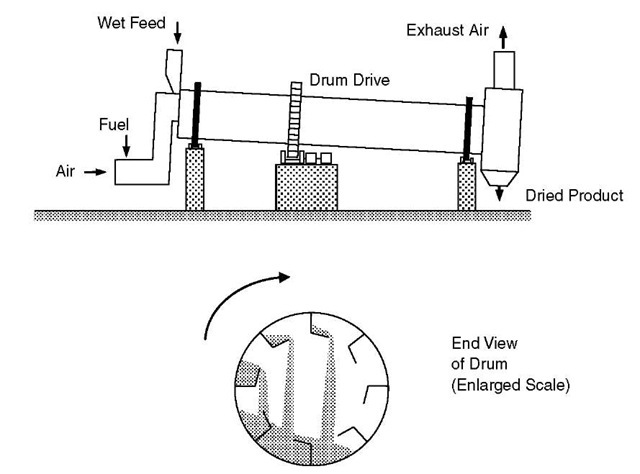




![Plot of specific energy consumption against (Ta — T^)/(Y0 — Fa) for spray dryers (after Baker and Mckenzie[8]). Plot of specific energy consumption against (Ta — T^)/(Y0 — Fa) for spray dryers (after Baker and Mckenzie[8]).](http://lh6.ggpht.com/_1wtadqGaaPs/TGourMJnbRI/AAAAAAAAPvw/Ro3ZdGJPbso/tmp19D74_thumb_thumb.jpg?imgmax=800)
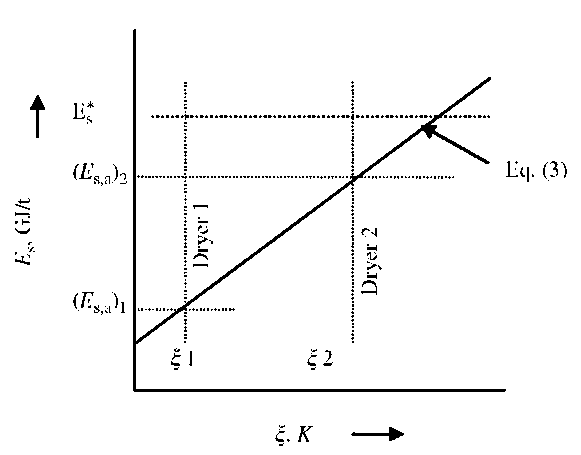

![Location of measurement points (after Baker[6]). Location of measurement points (after Baker[6]).](http://lh5.ggpht.com/_1wtadqGaaPs/TGouwPgS3BI/AAAAAAAAPwI/zWigGrOPTfI/tmp19D78_thumb_thumb.png?imgmax=800)

